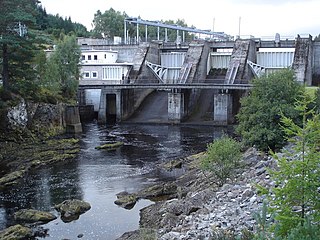Problems arising from nationalising part of the British gas industry
The first chairman of the board was Sir Andrew Clow who established the headquarters at 25 Drumsheugh Gardens and 12 Rothesay Terrace Edinburgh. He served until 30 April 1956. In the last of his quarterly letters to his senior management, he reflected on the experience of centralising the control of over two hundred independent undertakings. The remainder of the article is abstracted from that letter and includes explanatory remarks.
Functions of gas undertakings
Each undertaking performed the functions of coal gas production and distribution through underground pipes to domestic, commercial and industrial customers, sales promotion, finance, etc. Some works were too small to remain viable and one at Wigton was closed. Studies were conducted to establish whether previously rival works could be integrated, both managerially and physically by linking their distribution systems.
Ownership of Scottish gas undertakings
Most of the larger gas undertakings had been owned by local authorities and employed many expert and talented engineers. However the same authorities were also owners of electricity generating and supply companies (the main rivals of the gas industry); the local authorities had felt no need to promote competition.
Post-war issues
Immediately after World War II there was a chronic shortage of pipes (for mains replacement and extension to new customers), and other materials. Most gas pipes were made of cast iron and often leaked at the joints. Actual 'unaccounted for gas' (loss through leakage and other losses) was estimated as being as much as 25%. Refurbishment and replacement of pipes was a priority, for safety reasons. Little preventive work was carried out; distribution engineering was usually initiated by the detection of a leak.
Many gas works had not been adequately maintained, the price of coal and of coke oven gas was rising, contractors were in short supply and the Scottish rating system at that time was such that 'profits might prove as damaging as losses'.
Cost-based pricing
Regarding gas tariffs, the chairman wrote "we must keep the allocation of charges between customers fairly close to our estimate of their individual costs and we do not have the freedom of private companies to discriminate between customers whose conditions are similar." This was a reference to the notion that pricing of state-owned produce should reflect cost as accurately as possible (a cost-plus pricing model). This was in very sharp contrast to the free-market concept of charging 'what the market will bear' i.e. the highest price that still enables sufficient competitive advantage to retain that customer, thus capturing all the consumer surplus.
Losing market share
Gas was losing share of the industrial market in Scotland because of falling oil prices. One of the largest refinery sites in the country was located almost at the centre of the industrial belt.
Domestic customers were becoming ever more sensitive to the price of gas as electric heating, in various forms, became relatively cheaper.
New house building after the war was on an unprecedented scale on mainly green-field sites beyond the reach of gas mains. Government rules about return on investment often made mains extension impossible, again to the detriment of suppliers of gas versus electricity.
Personnel problems
While the chairman was confident about the technical expertise of the staff he had inherited, he recognised that, unlike the previous owners, it was necessary to promote gas sales by 'educational advertisement and display, canvassing and salesmanship' and by making 'more contact with domestic customers, local authorities and various personalities'. The industry had, hitherto, been managed mainly by professional engineers, whose aim was to produce and distribute gas as cheaply as possible, bearing in mind that, in the interest of safety, demand had to be met at all times.
Managerial priorities
A failure to supply for any reason had dire consequences. Not only might it entail prosecution for breach of statutory responsibilities, but restoration of supply required, and still requires, every home to be visited to ensure that all gas taps are turned off (including the main supply to the premises). The procedure then requires pipes to be purged to ensure that any explosive mixture of gas and air is removed before the main is pressurised again. Finally, every household had to be visited again to ensure safe restoration of supply.
Consequently, the engineer manager was more concerned about ensuring continuity of supply and with balancing supply with demand on an hourly basis. The notion that in addition to performing his delicate task, he would have to 'sell' gas by making personal contact with potential customers was unusual.
The chairman admitted that "the great amount of work that re-organisation has involved has also had some effect, especially in the bigger places, in leaving Managers too little time to move around and to have frequent and close contact with others at work, whether they are stokers or typists, or mainlayers or meter readers in whatever capacity they serve". Customer contact not mentioned.
Industrial relations
The chairman remarked on the good relations the Board had with the trade unions and, although he welcomed increasing wages, he deplored the fact that wage negotiations were conducted at national level (by the Gas Council) and that wage awards were "above what the cost of living and our (Scottish) position justified." He regretted that he had to mark his departure with a concomitant rise in gas prices.
Last thoughts
The chairman concluded his account by remarking that "... a first class plant, first class gas and coke, a first class office and showroom, a first class financial system are all admirable. But these and many more gadgets in the machine will be of little value unless those using them add to their professional competence a sense of vocation and an anxiety to brighten up what Wordsworth calls 'the still, sad music of humanity.'"
Undertakings in Scotland vested at nationalisation
The Board took over the following local authority and privately owned gas production and supply utilities:
The Central Electricity Generating Board (CEGB) was responsible for electricity generation, transmission and bulk sales in England and Wales from 1958 until privatisation of the electricity industry in the 1990s.
Centrica plc is a British multinational energy and services company with its headquarters in Windsor, Berkshire. Its principal activity is the supply of electricity and gas to consumers in the United Kingdom and Ireland.

The Office of Gas and Electricity Markets (Ofgem), supporting the Gas and Electricity Markets Authority, is the government regulator for the electricity and downstream natural gas markets in Great Britain. It was formed by the merger of the Office of Electricity Regulation (OFFER) and Office of Gas Supply (Ofgas).

The North of Scotland Hydro-Electric Board (1943–1990) was founded to design, construct and manage hydroelectricity projects in the Highlands of Scotland. It is regarded as one of the major achievements of Scottish politician Thomas Johnston, who chaired the board from 1945 to 1959.
The utility infrastructure of London, England comprises a range of services and facilities that support and enable the functioning of London as a world city. Infrastructure includes facilities associated with products and materials that are consumed such as electricity, gas, water, heating and liquid fuels; materials that are produced such as sewage and solid waste; and facilities that enable communication and connectivity – telecommunications.

The North Thames Gas Board was an autonomous state-owned utility area gas board providing gas for light and heat to industries, commercial premises and homes in south-east England. The board's area of supply, encompassing 1,059 square miles (2,740 km2), included parts of the County of London, Berkshire, Buckinghamshire, Essex, Hertfordshire, Middlesex and Surrey.

British Gas is an energy and home services provider in the United Kingdom. It is the trading name of British Gas Services Limited and British Gas New Heating Limited, both subsidiaries of Centrica. Serving around ten million homes in the United Kingdom, British Gas was the biggest energy supplier in the country, until 2024 when it was overtaken by Octopus Energy as the UK's largest electricty supplier. It remains larger for gas. It is considered one of the Big Six dominating the gas and electricity market in the United Kingdom. Their lines are open from 8am to 5pm on weekdays, and 9am to 6pm on weekends.
Public water supply and sanitation in the United Kingdom is characterised by universal access and generally good service quality. A salient feature of the sector in the United Kingdom compared to other developed countries is the diversity of institutional arrangements between the constituting parts of the UK, which are each described in separate articles, while this article is devoted to some common issues across the United Kingdom.
The City of London Electric Lighting Company Limited (CLELCo) was a British electricity undertaking. It was formed in July 1891 to generate and supply electricity to the City of London and part of north Southwark. It owned and operated Bankside power station on the south bank of the river Thames. The company provided and stimulated demand for electricity, increased its generating capacity, and competed and co-operated with other electricity undertakings in London. The company was dissolved on 1 April 1948 when the British electricity industry was nationalised.
The Charing Cross and Strand Electricity Supply Corporation Limited was a British electricity undertaking. It was incorporated as a public company in 1889 to generate and supply electricity to parts of the City of Westminster, Holborn and later the City of London. From 1925 it worked jointly with other companies as part of the London Power Company. The company was abolished on 31 March 1948 when the British electricity industry was nationalised, and its assets were transferred to the British Electricity Authority and the London Electricity Board. The Charing Cross Corporation's Bow power station continued in operation until 1969.
The Manx Utilities Authority is a Statutory Board of the Isle of Man Government which provides utilities for the Isle of Man. It was created in 2014 by the merging of the Manx Electricity Authority with the Isle of Man Water and Sewerage Authority.
The Electric Lighting Acts 1882 to 1909 are acts of the Parliament of the United Kingdom.
The Gas Council was a UK government body that provided strategic oversight of the gas industry in England, Wales and Scotland between 1949 and 1972.

The County of London Electric Supply Company Limited (C.L.E.S.Co) was a British electricity undertaking. It was incorporated as a public company in 1891 to generate and supply electricity to parts of south west London and two parishes adjacent to the City of London. It owned and operated power stations at Wandsworth and City Road. From 1925 it cooperated with three other London companies, with the intention of centralising electricity generation in the new, high thermal efficiency, power station at Barking. The company was abolished in March 1948 upon the nationalisation of the British electricity supply industry.
The South Metropolitan Electric Light and Power Company Limited was a British electricity undertaking. It was established in 1904 upon the amalgamation of two south London companies which had supplied electricity in south east London since 1893. It owned and operated a power station at Blackwell Point and one at Penge. From 1925 it formed an association with three other London companies, with the intention of centralising electricity generation in the new, high thermal efficiency, power station at Barking. The South Metropolitan Company was abolished in March 1948 upon the nationalisation of the British electricity supply industry.
The South London Electric Supply Corporation Limited was a British electricity undertaking. It was established in 1896 to supply electricity to the parish/borough of Lambeth in south London. The Corporation owned and operated a power station at Loughborough Junction. From 1925 it formed an association with three other London companies to centralise electricity generation in the new, high thermal efficiency, power station at Barking. The South London Electric Corporation was abolished in March 1948 upon the nationalisation of the British electricity supply industry.
Greenhill power station supplied electricity to the town of Oldham, England and the surrounding area from 1921 to 1960. It replaced the older Rhodes Bank generating station and was superseded by Chadderton B power station. Greenhill power station was owned and operated by Oldham Corporation until the nationalisation of the British electricity supply industry in 1948. The power station was built over the period 1921–24 and was decommissioned in 1960.
The Urban Electric Supply Company Limited (UESCo) was a British electricity industry holding company that operated from 1898 until the nationalisation of the electricity supply industry in 1948. It controlled directly, or indirectly through its subsidiaries, electricity undertakings throughout Britain.
The Electric Supply Corporation Limited was an electricity industry holding company that operated from 1897 until 1948. The corporation and its subsidiary companies generated and supplied electricity to towns and districts in Scotland and England.




